What is a hair transplant?
Hair transplantation, also known as hair restoration surgery, is a surgical procedure that involves the transfer of hair follicles from one part of the body (typically the scalp) to another part of the body (usually the balding area). It is a common cosmetic procedure used to treat hair loss and restore hair density.
Hair transplantation is a minimally invasive procedure that can be performed under local anesthesia. The process involves extracting individual follicular units (FUs), which are small groups of hair follicles, from the donor area, and then implanting them into the recipient area, where the balding is occurring. FUE (Follicular Unit Extraction) is the most commonly used hair transplant technique today.
Hair transplantation is a safe and one of the effective medical procedures in Turkey with a high success rate. However, it is important to choose an experienced hair transplant surgeon and clinic to ensure optimal results. Turkey has become a popular destination for hair transplantation due to the availability of experienced surgeons, affordable prices, and high-quality care.
Drawing upon my prior experience in the hair transplant field at one of Istanbul’s most renowned hospitals, I was eager to craft this informative guide. Additionally, I consulted with hair transplant experts in Istanbul to ensure that this comprehensive guide addresses all your concerns before embarking on your journey for hair transplant in Turkey.
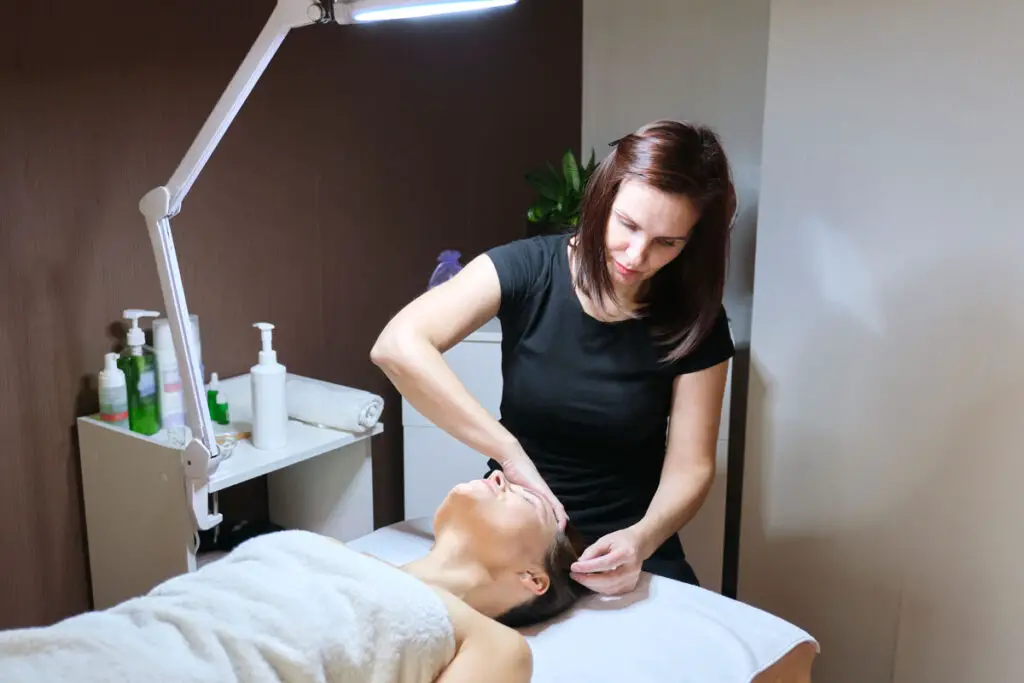
Benefits of Hair Transplantation:
- Restores hair density and appearance
- Boosts self-confidence and self-esteem
- Improves social interactions and overall quality of life
- Minimally invasive and involves local anesthesia
- High success rate with natural-looking results
Candidates for Hair Transplantation:
- Men and women experiencing hair loss
- Individuals with a stable hair loss pattern
- Good overall health and realistic expectations
- Non-smokers or those willing to quit smoking
Types of Hair Transplant Techniques:
- Follicular Unit Extraction (FUE)
- Direct Hair Implantation (DHI)
- Robotic Hair Transplant
- Sapphire Hair Transplant
Overview of Hair Transplantation in Turkey
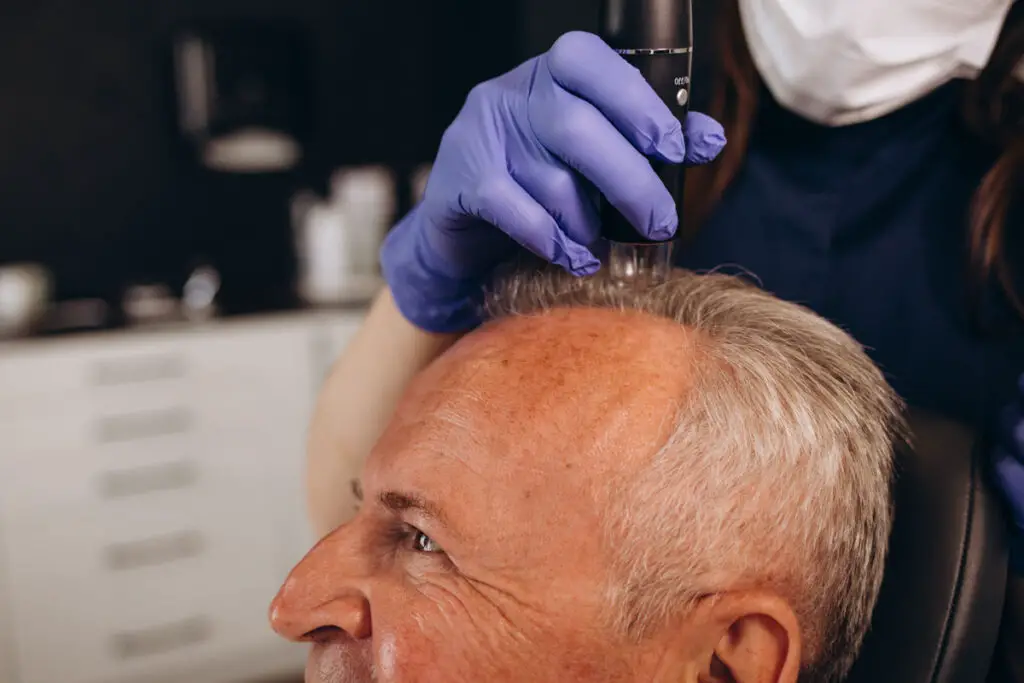
Hair Transplantation in Turkey: A Comprehensive Guide to Reclaiming Your Youthful Appearance
Hair transplantation has emerged as a transformative solution for individuals seeking to restore hair density and regain their youthful appearance. Turkey, in particular, has established itself as a global hub for hair transplant procedures, attracting patients from all over the world seeking effective and affordable hair restoration solutions. This growing reputation stems from a combination of factors that make Turkey an ideal destination for hair transplantation:
Hair transplant statistics in Turkey
Turkey is the world’s leading destination for hair transplantation, with over 1 million procedures performed annually.
Istanbul is the hair transplant capital of the world, with over 80% of procedures performed in the city.
The average cost of a hair transplant in Turkey is $2,000 to $3,000, which is significantly lower than the cost in other developed countries.
The most popular hair transplant technique in Turkey is Follicular Unit Extraction (FUE), which accounts for over 90% of procedures.
The success rate for hair transplants in Turkey is over 90%.
The majority of hair transplant patients in Turkey are men, but the number of female patients is increasing.
The most common reason for hair transplantation in Turkey is male pattern baldness.
Hair transplantation is a safe and effective procedure with minimal side effects.
Most patients are satisfied with the results of their hair transplant surgery.
These statistics demonstrate the popularity and success of hair transplantation in Turkey. The country’s advanced technologies, skilled surgeons, affordable prices, and supportive environment make it an ideal destination for individuals seeking hair restoration solutions.
What to Expect?
1. Accessibility of Advanced Hair Transplant Techniques and Technologies:
Turkish hair transplant clinics are equipped with state-of-the-art technologies and employ the latest techniques in hair restoration, including Follicular Unit Extraction (FUE), Direct Hair Implantation (DHI), Robotic Hair Transplant, and Sapphire Hair Transplant. These advanced techniques offer precision, efficiency, and natural-looking results, making them the preferred choices for hair transplant surgeons.
2. Expertise of Highly Skilled Hair Transplant Surgeons:
Turkey boasts a concentration of experienced and renowned hair transplant surgeons with extensive training and expertise in various hair restoration techniques. These surgeons have dedicated their careers to mastering the art of hair transplantation, ensuring patients receive the highest level of care and expertise.
3. Affordable Treatment Costs Compared to Other Countries:
Hair transplant procedures in Turkey are generally more affordable compared to other developed nations. This is due to several factors, including lower labor costs, a competitive market, and government support for the medical tourism industry. Patients can achieve significant savings by opting for hair transplantation in Turkey while still receiving high-quality care.
4. Recovery and Rehabilitation Support in a Culturally Rich Environment:
Turkey offers a welcoming and supportive environment for patients undergoing hair transplantation. Ample medical facilities, comfortable accommodations, and a plethora of cultural attractions enhance the recovery experience. Patients can enjoy the vibrant city life of Istanbul or relax in the picturesque coastal towns while recovering from their procedures.
Turkey is also recognized as a premier shopping destination in Europe, offering an abundance of opportunities to indulge in retail therapy at Istanbul’s finest shopping centers.
Additional Advantages of Hair Transplantation in Turkey:
- Shorter waiting times for procedures compared to other countries
- Language support and assistance for international patients
- Opportunity to combine hair transplantation with a vacation or cultural experience
- Access to a wide range of aesthetic treatments and procedures
Understanding the Hair Transplant Process
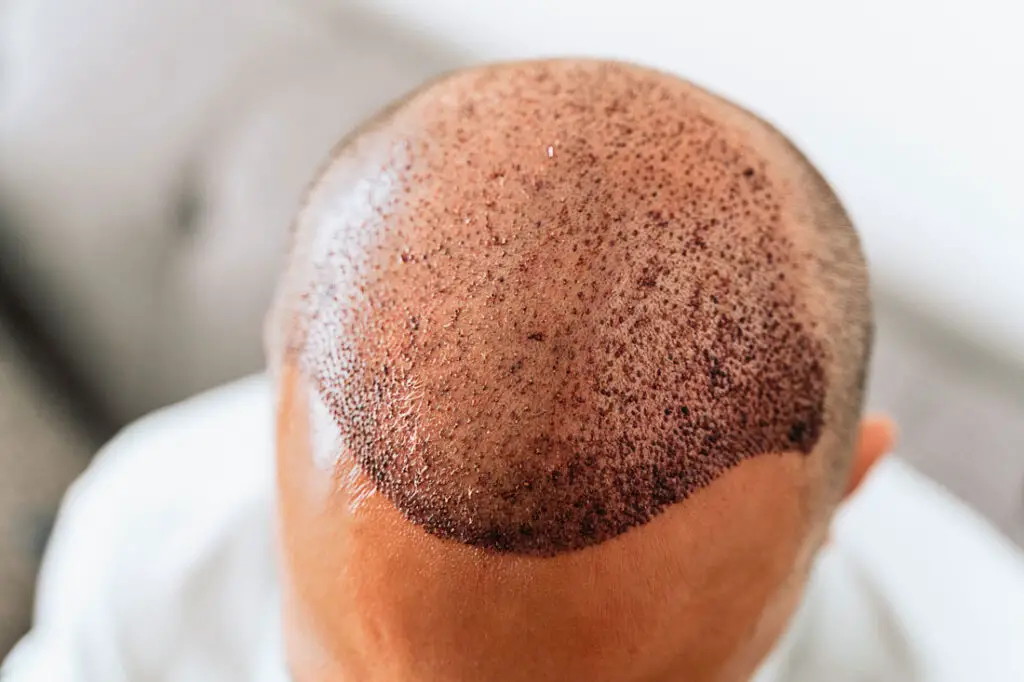
Types of Hair Transplant Techniques
Detailed explanation of the FUE technique
- Extracting individual follicular units (FUs) directly from the donor area
- Using specialized tools to minimize damage to the surrounding tissue
- Suitable for larger hair transplant procedures
Advantages of FUE over traditional methods
- Minimally invasive and scarless procedure
- Faster healing time and reduced discomfort
- Suitable for individuals with limited donor hair
Comprehensive overview of the DHI technique
- Simultaneous extraction and implantation of follicular units
- Using Choi implanters to precisely place grafts into recipient sites
- Suitable for smaller hair transplant procedures
Benefits of DHI for efficient and precise hair transplantation
- Minimizes handling of grafts, improving their survival rate
- Reduces trauma to the recipient area, promoting faster healing
- Allows for more precise placement of grafts, enhancing natural-looking results
Introduction to the concept of robotic hair transplantation
- Utilization of robotic technology for precision and accuracy
- Assistance from a surgeon to oversee the procedure
- Potential for further advancements in robotic hair transplantation
Advantages of robotic hair transplantation for enhanced precision
- Minimizes human error and fatigue, ensuring consistency
- Provides consistent graft placement and depth, improving results
- Potential for faster procedure times
Unique features of sapphire-tipped instruments in hair transplantation
- Smoothness and sharpness of sapphire tips reduce friction and trauma
- Minimizes damage to surrounding tissue and blood vessels
- Promotes faster healing and reduced scarring
Benefits of sapphire hair transplantation over traditional methods
- Enhances graft survival and reduces graft loss
- Improves blood flow to the recipient area
- Contributes to faster healing and a more comfortable recovery
The Hair Transplant Procedure: Step by Step
Preoperative consultation and assessment
Importance of a thorough preoperative evaluation
- Assessing the patient’s hair loss pattern and extent
- Evaluating the donor area for suitability and graft availability
- Discussing patient expectations and desired outcomes
Process of assessing the patient’s scalp, hair characteristics, and expectations
- Analyzing the degree of hair loss, hair density, and hair quality
- Understanding the patient’s desired hair density and appearance
- Addressing any concerns or questions regarding the procedure
Role of the surgeon in tailoring the treatment plan to the individual’s needs
- Selecting the most appropriate hair transplant technique
- Determining the number of grafts required
- Providing personalized instructions and recommendations
Anesthesia and preparation
Use of local anesthesia to minimize discomfort during the procedure
- Administering local anesthetic injections to the donor and recipient areas
- Ensuring patient comfort and minimizing pain sensation
Preparation of the donor and recipient areas
- Cleaning and shaving the donor and recipient areas
- Marking the recipient area to guide graft placement
Importance of patient comfort and anxiety management
- Providing a calm and comfortable environment
- Offering reassurance and support throughout the procedure
- Addressing any anxiety or concerns expressed by the patient
Graft harvesting techniques
Detailed explanation of the specific techniques used to extract follicular units from the donor area
FUE technique:
- Using specialized tools to extract individual follicular units (FUs) from the donor area
- Minimizing damage to the surrounding tissue
- Suitable for larger hair transplant procedures
Strip harvesting technique:
- Removing a strip of scalp tissue from the donor area
- Extracting individual follicular units from the strip
- Suitable for patients with abundant donor hair
Importance of careful handling and preservation of the grafts
- Maintaining the integrity of the follicular units
- Ensuring proper storage and transportation of the grafts
Recovery from Hair Transplantation and Post-Operative Care
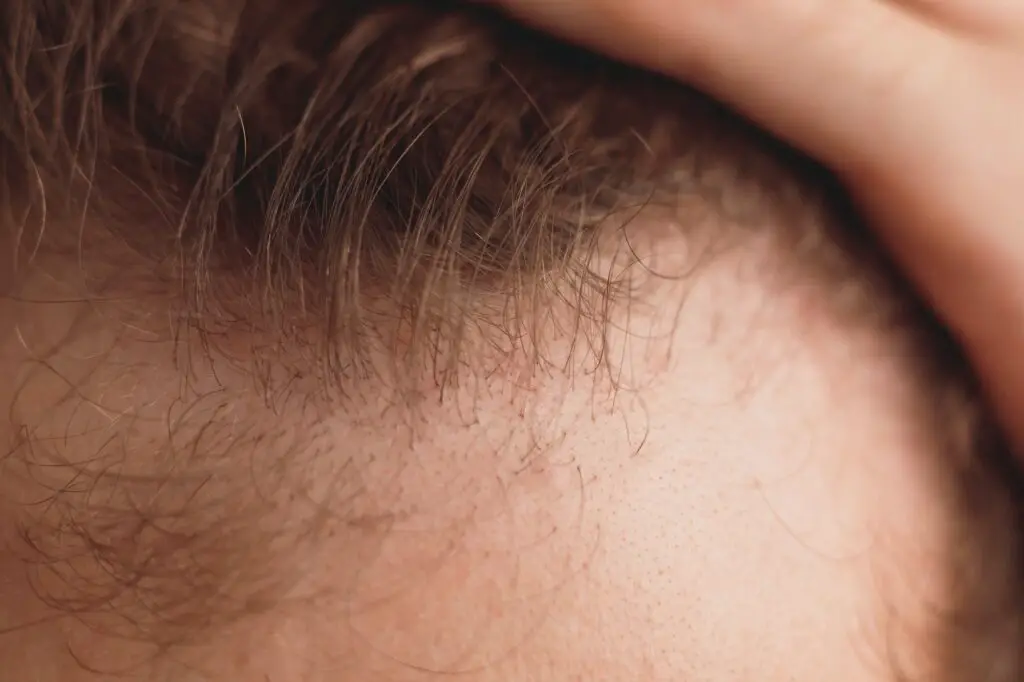
Typical recovery timeline and expected outcomes
Following a hair transplant procedure, patients can expect a mild recovery period. The exact timeline and progression of recovery can vary depending on individual factors, such as the extent of the procedure, the patient’s overall health, and adherence to postoperative instructions.
Days 1-3:
During the first few days following the hair transplant, patients can expect to experience:
- Mild swelling and redness at the donor and recipient sites.
- Discomfort or itching at the treated areas.
- Crusting or scabbing around the grafted follicles.
Week 1:
By the end of the first week, the crusts begin to fall off, revealing the newly implanted follicles. Some discomfort may persist, especially when washing hair.
Weeks 2-4:
Most crusts have disappeared by weeks 2-4, and the scalp begins to heal. A temporary shedding of transplanted hair (known as shock loss) may occur during this time.
Months 2-4:
New hair growth starts to emerge between months 2-4, but it may be thin and fine. The overall appearance of the transplanted area begins to improve.
Months 5-12:
New hair growth continues to thicken and mature between months 5-12. The final results of the hair transplant become more apparent during this period.
Post-operative care instructions and guidelines
To promote a smooth recovery and optimize hair transplant results, patients should adhere to the following post-operative care instructions:
Rest and avoid strenuous activities: Avoid strenuous activities or heavy lifting for at least the first week following the procedure.
Maintain proper hygiene: Wash the transplanted area gently with a mild shampoo as instructed by the surgeon.
Address discomfort with medication: Take prescribed medications, such as pain relievers or antibiotics, as directed by the surgeon.
Protect the scalp from sunlight: Wear a hat or sunscreen to protect the transplanted area from direct sunlight.
Avoid touching or rubbing the transplanted area: Refrain from touching, scratching, or rubbing the transplanted area to prevent irritation and dislodgement of grafts.
Continue follow-up appointments: Attend scheduled follow-up appointments with the surgeon to monitor progress and ensure proper healing.
Managing potential side effects and addressing any concerns
While hair transplantation is generally a safe and effective procedure, some potential side effects may occur, including:
Swelling and redness: Mild swelling and redness at the donor and recipient sites are common and typically subside within a few days.
Discomfort or itching: Mild discomfort or itching at the treated areas may be experienced, and pain relievers can be used as prescribed.
Temporary hair loss: Shock loss, a temporary shedding of transplanted hair, is normal and typically occurs within the first few months.
Infection: While rare, infections can occur and require prompt treatment with antibiotics.
Bleeding: Minor bleeding may occur, but excessive bleeding should be reported to the surgeon immediately.
Patients should not hesitate to contact their surgeon if they experience any concerns, persistent discomfort, or unexpected symptoms during the recovery period.
Long-term maintenance and care for optimal results
Even after the initial recovery period, maintaining a healthy scalp and following appropriate hair care practices can contribute to long-lasting results and overall hair health:
Regular scalp hygiene: Continue regular shampooing and conditioning as advised by the surgeon.
Protection from sun damage: Protect the scalp from excessive sun exposure by wearing hats or using sunscreen.
Healthy lifestyle habits: Maintain a balanced diet, adequate sleep, and appropriate stress management techniques for overall well-being.
Follow-up consultations: Attend scheduled follow-up appointments with the surgeon to assess long-term progress and provide ongoing support.
How long do hair transplants last?

Hair transplants can last for a lifetime, but the actual results will depend on a number of factors, including:
- The surgeon’s expertise and technique: A skilled surgeon will be able to implant the grafts in a way that maximizes their survival rate.
- The patient’s overall health and lifestyle: Individuals with a healthy scalp and good blood flow are more likely to experience successful hair growth.
- The extent of hair loss: The more severe the hair loss, the more grafts will be required, which may increase the risk of some grafts not taking.
In general, most patients can expect to see noticeable results within a few months of the procedure, with full results typically appearing within 12-18 months. However, some patients may continue to see increased hair growth for up to 2 years.
Here are some tips to help your hair transplant results last longer:
- Avoid excessively styling your hair: This can damage the transplanted follicles and reduce their lifespan.
- Use a mild shampoo and conditioner: Harsh products can irritate the scalp and cause hair loss.
- Wear a hat to protect your scalp from the sun: The sun’s ultraviolet rays can damage hair follicles and reduce their growth.
- Avoid smoking: Smoking can impair blood circulation to the scalp, which can reduce the chance of transplanted follicles surviving.
- Eat a healthy diet: A balanced diet provides the nutrients your hair needs to grow and stay healthy.
- Manage stress: Stress can contribute to hair loss, so find healthy ways to manage stress, such as yoga, meditation, or exercise.
By following these tips, you can help your hair transplant results last a lifetime and achieve the full, natural-looking hair growth you desire.
How painful is a hair transplant in Turkey?
Hair transplantation is a minimally invasive procedure that is generally considered to be relatively painless. The majority of patients experience mild discomfort during the procedure, which can be managed with local anesthesia. In some cases, oral medications may also be prescribed to further reduce discomfort.
The level of pain experienced during a hair transplant can vary depending on several factors, including the surgeon’s technique, the size of the procedure, and the patient’s individual sensitivity to pain. However, most patients report that the discomfort is tolerable and manageable.
How many days do I need to stay in Turkey for hair transplant?
The length of stay for hair transplant in Turkey depends on the procedure, the surgeon, and the patient’s individual preferences. However, most patients can expect to stay for 5-7 days.
Here is a breakdown of the typical timeline:
- Day 1-2: Consultation with the surgeon, pre-operative preparation
- Day 3-4: Hair transplant procedure
- Day 5-7: Post-operative care and follow-up appointment
Some patients may choose to stay longer to extend their vacation or explore the sights and culture of Turkey. However, 5-7 days is sufficient for a comprehensive hair transplant experience.
What is the cost of hair transplant in Turkey 2024
The cost of hair transplant in Turkey in 2024 varies depending on the surgeon, the clinic, the technique used, and the number of grafts required. However, it is generally much more affordable than in other developed countries.
The average cost of a hair transplant in Turkey is around €1,500 to €5,000, including accommodation and travel. However, you can find prices as low as €1,000 and as high as €10,000.
Here is a table of average hair transplant costs in Turkey in 2024:
Technique | Average cost |
|---|---|
FUE
| €1,500 to €4,000
|
FUT | €2,000 to €5,000 |
DHI | €3,000 to €6,000 |
The most affordable hair transplant procedures are FUE and DHI. FUE is the most common technique, and it involves extracting individual follicular units from the donor area and implanting them into the recipient area. DHI is a more advanced technique that uses a Choi implanter to directly insert follicular units into the recipient area.
The most expensive hair transplant procedures are FUT. FUT involves removing a strip of scalp tissue from the donor area and extracting follicular units from the strip. This technique is less common than FUE or DHI, but it can be used to transplant a larger number of grafts.
The average of Hair transplant prices by countries
Country | Hair Transplant Cost (€) |
|---|---|
Turkey | €1,990 – €3,500 |
UK (England) | €8,000 – €20,500 |
United States | €9,900 – €15,200 |
France | €7,500 – €14,700 |
Ireland | €19,000 – €25,000 |
Spain | €3,500 – €11,500 |
Canada | €6,000 – €10,500 |
How many grafts needed for hair transplant?
The number of grafts required for a hair transplant will depend on the severity of your hair loss. A typical hair transplant will involve 2,000 to 5,000 grafts. However, you may need more grafts if your hair loss is severe.
Here is a table of the average number of grafts required for different levels of hair loss:
Hair loss severity | Average number of grafts |
|---|---|
Mild | 2,000 to 3,000 grafts |
Moderate | 3,000 to 4,000 grafts |
Severe | 4,000 to 5,000 grafts |
If you are considering a hair transplant in Turkey, it is important to do your research and choose a reputable clinic with experienced surgeons. You should also get multiple quotes from different clinics to get the best possible price.
To ensure you receive the highest quality hair restoration care, we can connect you with the top hair transplant clinics in Turkey. We have established partnerships with renowned surgeons and esteemed clinics specializing in hair transplantation procedures in Istanbul. Contact Us now and get your free consultation.
Does hair transplant require shaving head?
Whether or not hair shaving is required for hair transplantation depends on the specific technique used and the surgeon’s preference. However, in most cases, some degree of shaving is necessary to ensure optimal graft harvesting and implantation.
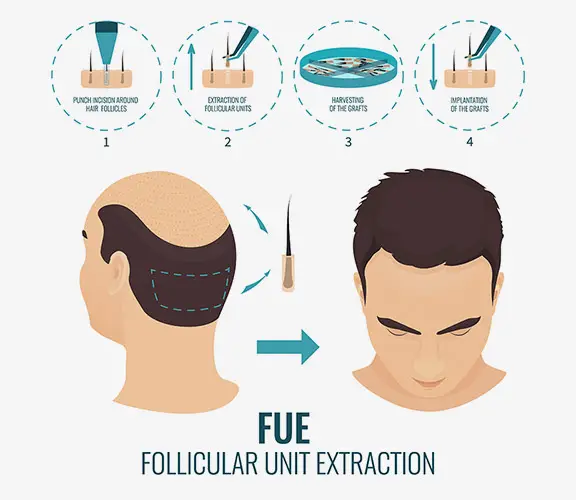
Follicular Unit Extraction (FUE), the most common hair transplant technique, typically requires shaving of the donor area, which is usually the back and sides of the scalp. This is because FUE involves extracting individual follicular units (FU) directly from the donor area, and shaving the area provides better visibility and access for the surgeon.
However, there are some instances where shaving may not be necessary, or only a small portion of the donor area may need to be shaved. This is more likely for patients with thicker hair or those undergoing a smaller procedure.
Other hair transplant techniques, such as Strip Hair Transplantation (FUT) or Robotic Hair Transplantation, may not require shaving the entire donor area. FUT involves removing a strip of scalp tissue from the donor area, and the hair follicles are then extracted from the strip. Robotic hair transplantation uses a robotic arm to assist in graft harvesting, but shaving may still be necessary depending on the surgeon’s technique and the patient’s hair characteristics.
Conclusion: Embarking on a Transformative Hair Restoration Journey in Turkey
For individuals seeking to regain their lost hair and revitalize their self-image, Turkey has emerged as a leading destination for hair transplantation. With its exceptional value for money, unparalleled expertise, and state-of-the-art technology, Turkey offers a comprehensive solution for hair restoration.
The affordability of hair transplant procedures in Turkey is a significant factor attracting patients from around the globe. The cost of these procedures is typically 50-70% lower than in countries like the United States, the United Kingdom, and Germany. This affordability is attributed to lower labor costs, high competition among clinics, and government support for the medical tourism industry.
Turkish hair transplant surgeons are among the most experienced and skilled in the world. Istanbul, in particular, is a global center for hair restoration, boasting a concentration of highly trained surgeons and renowned clinics. This expertise stems from the high demand for hair transplant procedures in Turkey, leading to a deep pool of experienced practitioners.
Turkish hair transplant clinics are equipped with the latest advancements in medical technology, ensuring that patients receive the most effective and comfortable procedures. Clinics employ advanced techniques like Follicular Unit Extraction (FUE) and Direct Hair Implantation (DHI), known for their precision and high graft survival rates.
Turkey’s major cities, particularly Istanbul, are well-connected to international destinations, making them easily accessible to patients worldwide. Direct flights from most major cities ensure convenient travel, and reputable clinics provide comprehensive travel and accommodation assistance.
Read Also: Visa Requirements for Medical Tourism in Turkey
Turkey offers a unique blend of cultural heritage, modern attractions, and breathtaking natural beauty. Patients can combine their hair transplant journey with a cultural immersion experience, exploring Istanbul’s rich history, vibrant markets, and stunning scenery.
Selecting the right hair transplant clinic in Istanbul is crucial for a successful outcome. Consider factors such as clinic reputation and experience, surgeon qualifications and expertise, patient reviews and testimonials, clinic facilities and technology, and transparency and communication.
Hair transplantation in Turkey offers a comprehensive solution for hair loss, restoring not only hair but also confidence and self-esteem. With its affordability, expertise, cultural allure, and easy accessibility, Turkey stands as a compelling destination for individuals seeking hair restoration and a transformative journey.
FAQ about Hair transplant in Turkey, Istanbul
The cost of hair transplantation in Turkey typically ranges from €1,500 to €4,000. This is significantly lower than the cost of hair transplantation in other developed countries, such as the United States, the United Kingdom, and Germany.
The most common techniques used for hair transplantation in Turkey are Follicular Unit Extraction (FUE) and Direct Hair Implantation (DHI). FUE is a minimally invasive technique that involves extracting individual follicular units from the donor area and transplanting them into the recipient area. DHI is a more advanced technique that uses a Choi implanter to directly insert follicular units into the recipient area.
There are many benefits to getting a hair transplant in Turkey, including:
- Affordability: Hair transplantation in Turkey is significantly more affordable than in other developed countries.
- Expertise: Turkish hair transplant surgeons are among the most experienced and skilled in the world.
- State-of-the-art technology: Turkish hair transplant clinics are equipped with the latest advancements in medical technology.
- Cultural immersion: Turkey offers a unique blend of cultural heritage, modern attractions, and breathtaking natural beauty.
When choosing a hair transplant clinic in Istanbul, it is important to consider the following factors:
- Clinic reputation: Choose a clinic with a proven track record of success.
- Surgeon qualifications: Verify the surgeon’s training, experience, and certifications.
- Patient reviews: Read patient reviews to gain insights into the clinic’s practices, patient care, and overall experience.
- Facilities and technology: Ensure the clinic utilizes the latest technology and maintains a high standard of hygiene and safety.
- Transparency and communication: Verify that the clinic provides clear pricing, detailed treatment plans, and open communication throughout the process.
The recovery time for hair transplantation in Turkey is typically 7-10 days. Most patients can return to work and their normal activities within a week.
The risks and side effects of hair transplantation in Turkey are typically minor and temporary. These may include:
- Swelling: Swelling around the donor and recipient areas is common and typically subsides within a few days.
- Redness: Redness around the donor and recipient areas is also common and typically subsides within a few days.
- Discomfort: Discomfort around the donor and recipient areas is common and can be managed with pain medication.
- Temporary hair loss: Some temporary hair loss may occur in the transplanted area, but this is normal and the hair will typically grow back within a few months.
There are a few things you can do to prepare for hair transplantation in Turkey:
- Quit smoking: Smoking can impair blood circulation to the scalp, which can reduce the chance of transplanted follicles surviving.
- Avoid alcohol: Alcohol can also impair blood circulation to the scalp.
- Maintain a healthy diet: A healthy diet will provide your body with the nutrients it needs to heal properly.
- Get enough sleep: Adequate sleep will help your body heal properly.
- Manage stress: Stress can also impair blood circulation to the scalp.
- Arrange travel and accommodation: Book your flights and accommodation well in advance.
- Inform your doctor: If you are taking any medication, it is important to inform your doctor so that they can advise you on whether or not to continue taking it before and after the procedure.
There are a few things you can do to care for your hair after hair transplantation in Turkey:
- Keep the transplanted area clean: Wash your hair with a mild shampoo as instructed by your surgeon.
- Avoid touching the transplanted area: Refrain from touching, scratching, or rubbing the transplanted area to prevent irritation and dislodgement of grafts.
- Avoid strenuous activity: Avoid strenuous activity for at least the first week following the procedure.
- Wear a hat to protect the transplanted area from the sun: The sun’s ultraviolet rays can damage hair follicles and reduce their growth.
- Follow-up with your surgeon: Attend scheduled follow-up appointments with your surgeon to monitor progress and ensure proper healing.



